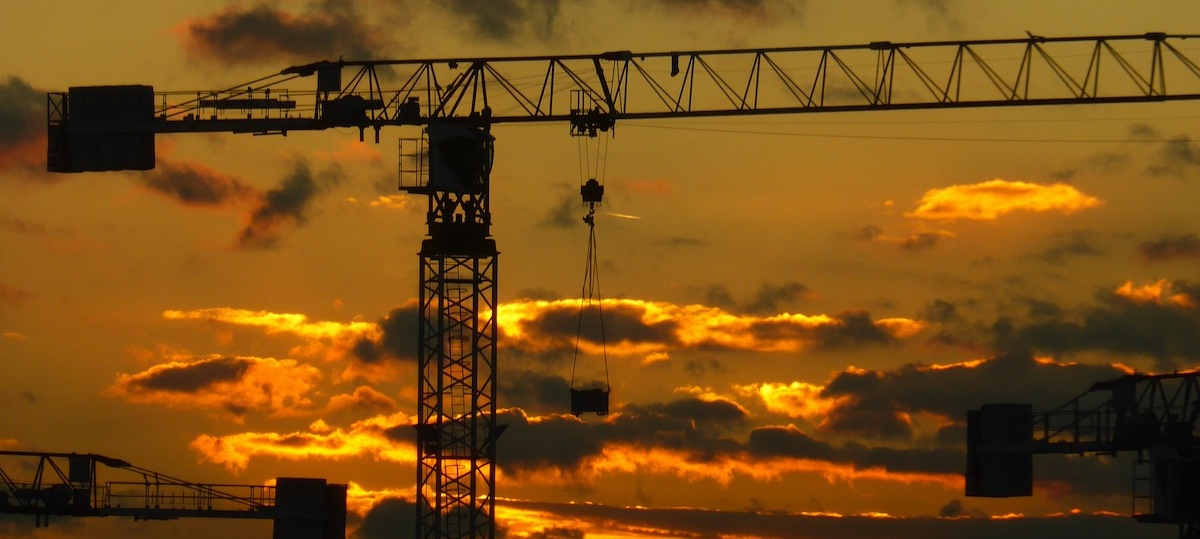Today's Census Bureau release regarding nonresidential construction spending did not just offer good news about April, it also supplied upwardly revised spending data for both February and March.
Nonresidential spending expanded 3.2% on a monthly basis in April, and spending totaled $646.7 billion on a seasonally adjusted, annualized basis, according to the government's initial estimate. Nonresidential construction is up by a solid 8.8% over the past year, consistent with ABC's forecast of high single-digit growth.
The Census Bureau also revised March's nonresidential spending figure from $611.8 billion to $626.7 billion, and February's figure from $613.1 billion to $618.4 billion. Initial estimates suggested that nonresidential construction was sagging during the early months of the year; however, the new data indicate spending has expanded during each of the previous three months.
"There is a considerable amount of financial capital available to move construction projects forward and low interest rates certainly help. While the availability of substantial financial capital may eventually produce over-built private construction markets, for now the expectation is that progress will continue." —Anirban Basu, ABC Chief Economist
"The upbeat assessment of nonresidential construction in April has been rendered more meaningful by the upward revisions for prior months," said ABC Chief Economist Anirban Basu. "The presumption had been that nonresidential spending construction data would improve as we approached the summer, and the outlook ahead remains solid.
"There is a considerable amount of financial capital available to move construction projects forward and low interest rates certainly help," added Basu. "While the availability of substantial financial capital may eventually produce over-built private construction markets, for now the expectation is that progress will continue."
All but one nonresidential construction sector experienced spending increases in April:
• Manufacturing-related construction spending expanded 2.6% in April and is up a whopping 52.9% on a yearly basis.
• Office-related construction spending expanded 3.7% in April and is up 8.8% compared to the same time one year ago.
• Construction spending in the transportation category grew 1.6% on a monthly basis and has expanded 11.6% on an annual basis.
• Lodging-related construction spending was up 5.5% on a monthly basis and 17.6% on a year-over-year basis.
• Health care-related construction spending expanded 2.1% for the month and is up 2.6% compared to the same time last year.
• Spending in the water supply category expanded 0.7% from March and is up 0.8% on an annual basis.
• Public safety-related construction spending gained 2.3% on a monthly basis, but is down 5.6% on a year-over-year basis.
• Commercial construction spending expanded 2.7% in April and is up 17.5% on a year-over-year basis.
• Religious spending gained 3.3% for the month, but is down 7.8% compared to the same time last year.
• Sewage and waste disposal-related construction spending gained 0.5% for the month and has grown 14.9% on a 12-month basis.
• Power-related construction spending grew 2.5% for the month, but is 11.3% lower than the same time one year ago.
• Highway and street-related construction spending expanded 8.5% in April and is up 4.8% compared to the same time last year.<
• Conservation and development-related construction spending grew 3.7% for the month and is up 17.2% on a yearly basis.
• Amusement and recreation-related construction spending improved 2.5% on a monthly basis and is up 23.3% from the same time last year.
• Education-related construction spending gained 3.2% for the month and is up 0.4% on a year-over-year basis.
Spending declined in only one nonresidential construction subsector in April:
• Communication-related construction spending fell 5.9% for the month and is down 5.5% for the year.
To view the previous spending report, click here.
Related Stories
Urban Planning | Feb 21, 2018
Leading communities in the Second Machine Age
What exactly is the Second Machine Age? The name refers to a book by MIT researchers Erik Brynjolfsson and Andrew McAfee.
Retail Centers | Feb 20, 2018
Is there a future in retail banking? Part II
It is critical to not view the physical branch as just another sales channel, but as an important touchpoint along a customer’s journey.
Architects | Feb 15, 2018
AIASF Equity by Design to launch 2018 Equity in Architecture Survey
AIA San Francisco (AIASF) and the Equity by Design Committee, launched the third national Equity in Architecture Survey on February 12, 2018. Building upon the survey conducted in 2016, the third survey will further advance the national movement for equitable practice in the profession.
Urban Planning | Feb 14, 2018
6 urban design trends to watch in 2018
2017 saw the continuation of the evolution of expectations on the part of consumers, developers, office workers, and cities.
Office Buildings | Feb 13, 2018
Office market vacancy rate at 10-year low
Cautious development and healthy absorption across major markets contributed to the decline in vacancy, according to a new Transwestern report.
Architects | Feb 12, 2018
AIA selects seven individuals to receive the 2018 Associates Award
The recipients will be honored at the AIA Conference on Architecture 2018 in New York City.
Architects | Feb 9, 2018
AIA's 2018 Young Architects Award honors 18 recipients
The Young Architects Award recipients will be honored at the AIA Conference on Architecture 2018 in New York City.
Architects | Feb 8, 2018
Three ways cities could evolve 2018
Cities change constantly, but given the numerous disruptive factors spanning technology, policy, climate and more that will impact 2018 – it could prove to be a year of dynamic change for our urban fabric.
Architects | Feb 7, 2018
8 inefficiencies in the architecture + design industry (and possible solutions)
Matthew Rosenberg has identified 8 major inefficiencies in the architecture and design industry, as well as a solution for each of them.
Architects | Feb 5, 2018
Little names new Corporate President and COO
International architecture and design firm Little has appointed Carolyn Rickard-Brideau as its new Corporate President, and Charles Todd as its Chief Operating Officer.















